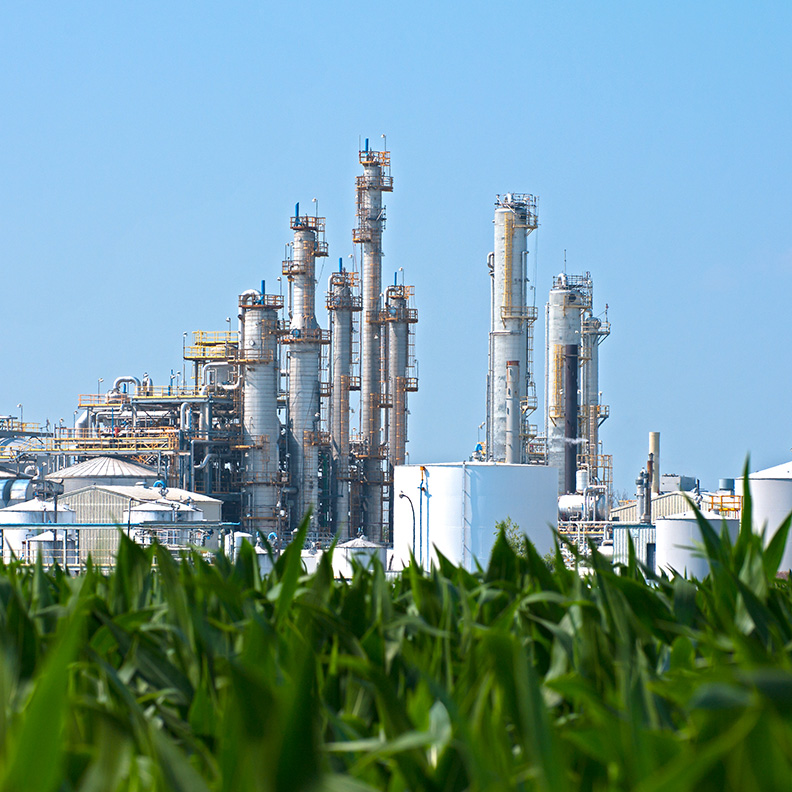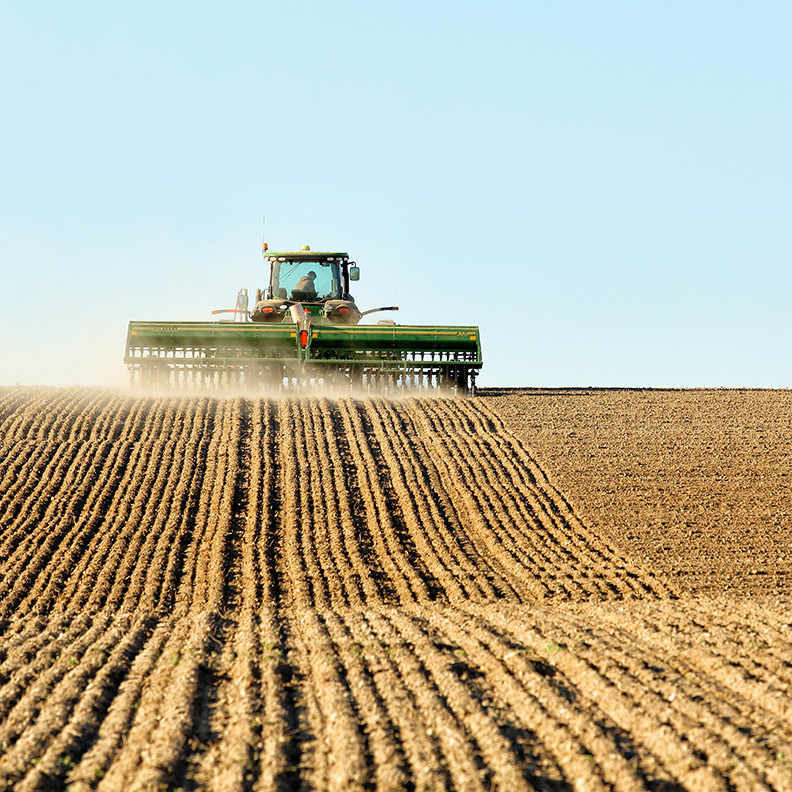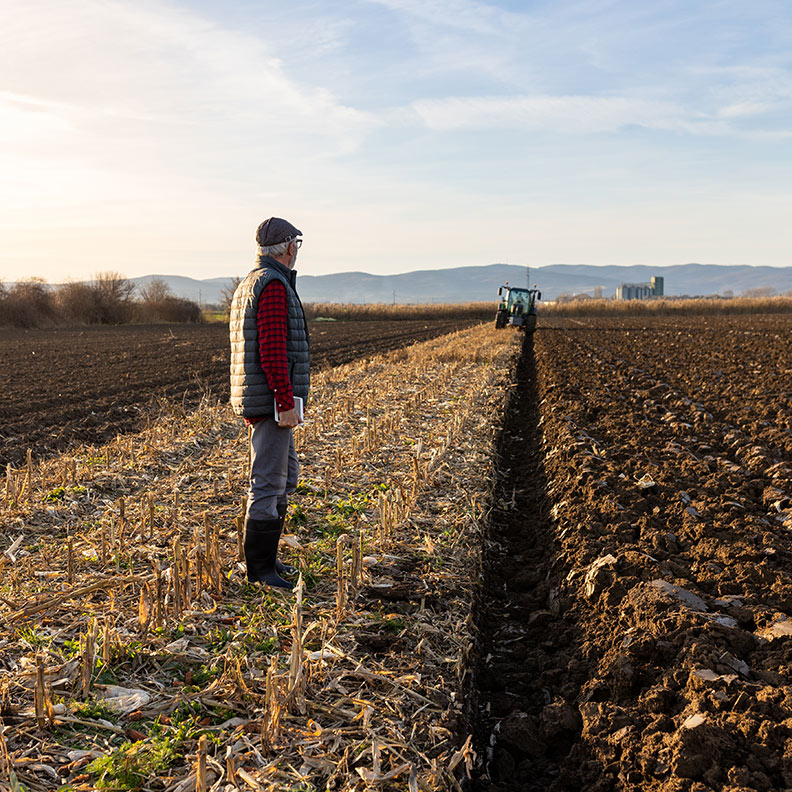Farmers throughout the U.S. are amid making their final decisions for the 2021 crop year. Most major ag commodities are at high prices that are being supported by bullish supply and demand issues around the world. Ag producers are preparing for a year with optimistic prices and final decisions due soon include crop insurance elections, input choices, crop rotations, lending needs, machinery improvements, and hedging crop risk. It is hard to imagine while subzero temperatures loom for nearly the entire Corn Belt, but planters may be rolling in eight weeks.
U.S. row crop
The bull rally in ag commodities will drastically affect the breakdown across each planted crop in 2021. Total corn and soybean acres for the 2021 crop year are estimated to be a record 182.0 million total acres, according to USDA. Corn acres are slated at 92.0 million acres, nearly unchanged from 2020 and soybean acres are slated at 90.0 million acres, up 7.4% from 2020. The current new crop price ratio of soybeans to corn is 2.59:1 and the wider that ratio becomes, the more likely corn acres will flip to soybeans and vice versa. New crop corn is up over 4% since January 1 and new crop soybeans are up over 6%.
Farmers will need to elect their ARC/PLC Farm Bill decision by March 15 and spring pricing for crop insurance is almost wrapped up with corn, soybeans, and wheat in the mid $4.00, $11.00, and $6.00 ranges, respectively.
U.S. livestock and dairy
Livestock prices are forecasted to increase among all sectors highlighted by a 17% increase in hog prices and 6% increase in cattle prices, according to USDA. 2021 will likely provide a more stable demand stream than in 2020, but higher feed costs will be a headwind for producers.
Yearly milk production is estimated nearly 2% higher by USDA and average milk prices are forecasted to decrease by 6%. As of January 1, dairy cow numbers were up 1% from 2020, but farmers are forecasted to retain 2% less heifers in 2021, which may lead to a slightly smaller herd. Similar to livestock, the dairy sector will benefit from a stable demand cycle in 2021 compared to the pandemic cycle of 2020.
Ground-level insights from ag bankers
Garrett Becker, North Central ND
Overall, the weather conditions are extremely dry throughout most of our area which could become a problem for growers this year if late winter snow and/or rain continues to hold off. Most of the 2020 crop has been sold at this time, but there are still a handful of farmers holding on to a few bushels in hopes that prices continue to rise. Farmers are now selling small increments of new crop but remain hesitant to commit on large sales due to the bullish market.
A lot of equipment was updated at the end of 2020, which was needed and helped offset 2020 income. Both CFAP and PPP were programs that effectively supported both farmers and ranchers in this region. For the most part, growers are optimistic heading into 2021.
Greg Sjostrom, Northwest MN
It has been somewhat dry in the Red River Valley area, but it had been so wet the prior few springs that farmers are not too concerned at this point, but that could change quickly if the dry weather pattern extends past planting and into early summer. Most operations that I met with have plenty of old crop left to market, but with that said, it looks like everyone will to be slow to sell because they already sold a portion at lower prices and they want to make up for that lower price with a much higher one. Most farmers also feel that corn and soybeans will be fighting for acres this year, so prices should continue to go higher and thus very few have sold any 2020 crop recently or locked in new crop contracts.
I think capex projects will be done by some farmers, but only when necessary, and working capital will be rebuilt. The improved commodity prices and the potential that they could get even better is the undertone for optimism around here. Local sugar beet growers who mostly own American Crystal Sugar Company stock are very optimistic that prices should be strong over the next two years, provided they get expected yields.
Most farms are taking advantage of PPP if it is available to them, but most also feel that with the other government payments and the improved commodity prices, this is not as important as it was last spring.
Global ag
In the late 1990’s, China focused on becoming self-sufficient in corn production and in turn became net importers of soybeans. Now, China is set to become the largest corn and soybean importer in the world, according to the Financial Times. In early 2021, China purchased 2.1 million metric tons (mmt) of U.S. corn which was the largest single day sale in history. USDA estimates only 66.0 mmt of U.S. corn exports in the 2020/21 marketing year. The amount of Chinese live hogs rebounded over 100% since a low in early 2020 caused by African Swine Fever.
The first crop harvest is under way in Brazil and both soybean and corn harvests are running behind due to late maturity from late planting. In Mato Grosso, where 27% of total Brazilian soybean production occurs, only 22% of the crop is harvested compared to an average of 45% by now. The longer these harvests get delayed, the longer it will take Brazilian crops to hit global export markets which benefits northern hemisphere producers, including the U.S., since there are very limited global supplies. The late soybean harvest is also leading to a delayed planting of the second crop corn.
What to watch for
The next major USDA report is the Perspective Plantings Report on March 31 when USDA will provide the market with a solid estimate of U.S. planted acres broken down by crop for 2021. Although ag commodity prices are relatively elevated, strong optimism exists due to strong global demand. The past few years of low prices helped build sustainable demand.
Carbon markets have been a hot topic in 2021 with a few large companies entering into private carbon markets with promises of delivering U.S. farmers with revenue to help sequester carbon. It will be important to watch what percentage of these carbon credit prices are indeed returned to farmers.
Lastly, soil moisture levels will be closely monitored heading into spring. Throughout the U.S. most areas have average subsurface soil moisture, but there are patches of farmland that are low on moisture as we head into March.





